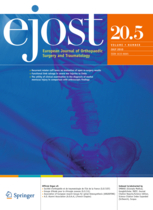
ARTHROPLASTY
MI-computer assisted-TKA: effective and accurate technique with improved clinical outcomes
Eur J Orthop Surg Traumatol. 2013 Sep 2087 patients, over 70 years old, who were suffering from knee osteoarthritis, and scheduled to undergo TKA were randomly assigned into one of two groups to receive either a minimally invasive computer assisted TKA (MICA-TKA) or a conventional TKA, with the goal of comparing the efficacy of the two methods. Results demonstrated that although both procedures resulted in similar leg alignment and component orientation; patients who received MICA-TKA were more likely to experience improved clinical results, such as knee society score, knee society function score, and range of motion at the 1 year follow-up.
Unlock the full ACE Report
You have access to {0} free articles per month.Click below to unlock and view this {1}
Unlock NowCritical appraisals of the latest, high-impact randomized controlled trials and systematic reviews in orthopaedics
Access to OrthoEvidence podcast content, including collaborations with the Journal of Bone and Joint Surgery, interviews with internationally recognized surgeons, and roundtable discussions on orthopaedic news and topics
Subscription to The Pulse, a twice-weekly evidence-based newsletter designed to help you make better clinical decisions
Exclusive access to original content articles, including in-house systematic reviews, and articles on health research methods and hot orthopaedic topics
Or upgrade today and gain access to all OrthoEvidence content for just $1.99 per week.
Already have an account? Log in


Subscribe to "The Pulse"
Evidence-Based Orthopaedics direct to your inbox.
{0} of {1} free articles
Become an OrthoEvidence Premium Member. Expand your perspective with high-quality evidence.
Upgrade Now












































































